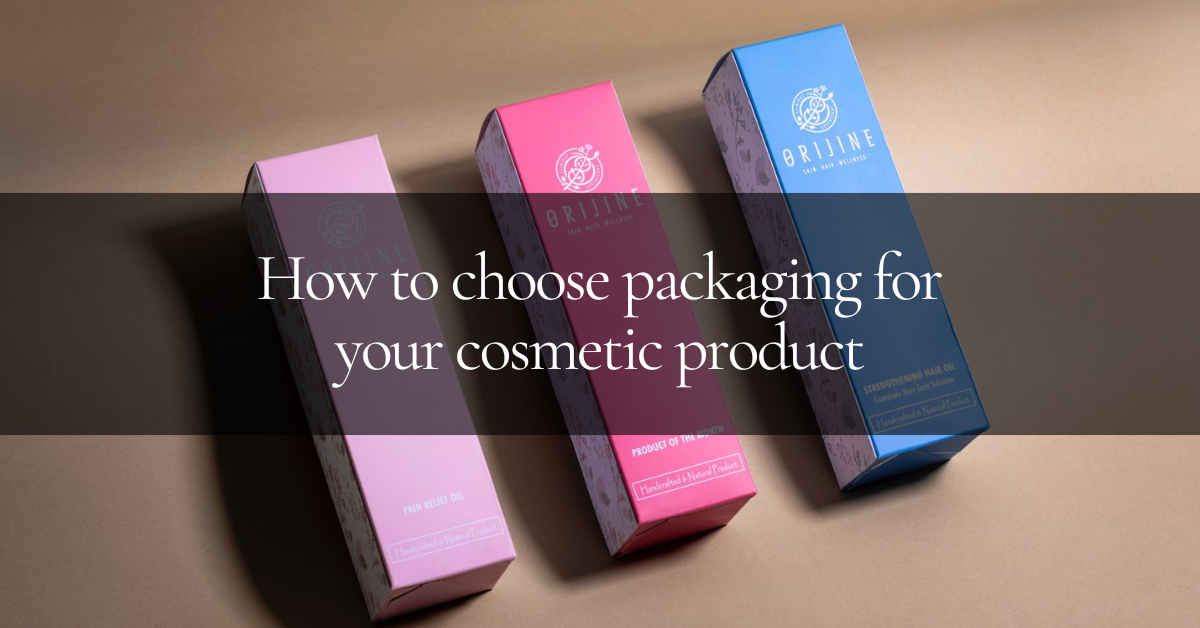Cosmetic packaging plays a pivotal role in the success of your product. It not only protects your product but also conveys your brand message to consumers. Understanding the importance of cosmetic packaging is crucial to making informed decisions that will positively impact your product’s marketability.
Understanding the Importance of Cosmetic Packaging
Cosmetic packaging serves multiple purposes beyond just holding the product. It serves as a powerful marketing tool and also ensures product protection.
When it comes to cosmetic packaging, every detail matters. From the shape and size of the container to the font and imagery on the label, each element plays a crucial role in capturing the attention of consumers. The tactile experience of the packaging, such as the smoothness of a glass bottle or the soft touch of a matte finish, can evoke a sense of luxury and quality.
The Role of Packaging in Marketing
Packaging is often the first point of contact between your product and potential customers. It acts as an ambassador for your brand, attracting attention, and conveying your brand values. The design, colors, and materials used in the packaging should align with your brand identity to create a memorable and consistent message.
Furthermore, packaging can tell a story. Whether it’s through intricate designs that reflect the cultural origins of the product or through sustainable packaging that highlights your brand’s commitment to environmental responsibility, each packaging choice communicates a narrative that resonates with consumers.
Packaging and Product Protection
While marketing is significant, protection is paramount. Packaging must safeguard the integrity of the product from factors such as air, light, moisture, and impact. Choosing the right packaging materials and design elements that provide adequate protection is essential.
Moreover, innovative packaging solutions, such as airless pump bottles or UV-protective containers, not only preserve the product’s efficacy but also enhance the user experience. By investing in protective packaging, brands can ensure that their products reach consumers in optimal condition, reinforcing trust and loyalty.
Sustainability and Eco-Friendly Packaging
In today’s environmentally conscious world, sustainability in packaging is gaining prominence. Consumers are increasingly favoring eco-friendly options. Opting for sustainable packaging materials, such as recyclable or biodegradable alternatives, not only reflects your commitment to the environment but also attracts environmentally conscious consumers.
Additionally, eco-friendly packaging initiatives, such as refillable containers or package-free options, not only reduce waste but also invite customers to participate in the sustainability journey. By incorporating eco-conscious practices into packaging design, brands can align with consumer values and contribute to a greener future.
Factors to Consider When Choosing Cosmetic Packaging
When selecting packaging for your cosmetic product, various factors need to be considered to ensure its effectiveness and cost-efficiency. The packaging of a cosmetic product is not merely a container but a crucial element that contributes to the overall brand image and customer experience.
Understanding the target market and consumer preferences is vital in determining the type of packaging that will resonate with your audience. Factors such as color psychology, design elements, and functionality can influence a consumer’s perception of your product and brand.
Material Selection for Cosmetic Packaging
The choice of packaging material is crucial for both protection and sustainability. Different materials, such as glass, plastic, or metal, offer varying levels of product protection and aesthetic appeal. Assess your product’s requirements and choose a material that meets both functional and aesthetic needs.
Furthermore, consider the environmental impact of the materials used in your packaging. With the increasing focus on sustainability and eco-conscious consumer choices, opting for recyclable or biodegradable materials can enhance your brand’s reputation and appeal to environmentally conscious customers.
Packaging Size and Shape
Size and shape play a significant role in the user experience and marketability of your product. Consider the convenience of handling and storage, as well as the impact of shelf presence. A well-designed package that fits comfortably in consumer’s hands and stands out on shelves can greatly enhance your product’s appeal.
Moreover, innovative packaging shapes or unique opening mechanisms can create a memorable unboxing experience for customers, fostering brand loyalty and word-of-mouth marketing.
Cost Considerations in Packaging
While quality is essential, cost considerations should not be overlooked. Evaluate your budget and strike a balance between the packaging’s quality and affordability. Collaborating with packaging manufacturers to find cost-effective solutions, without compromising on quality, can help you maximize your return on investment.
Additionally, exploring bulk purchasing options or considering streamlined packaging designs that reduce material waste can lead to cost savings in the long run. By strategically managing your packaging costs, you can allocate resources to other areas of product development or marketing initiatives to further enhance the success of your cosmetic product.
Designing Your Cosmetic Packaging
Once you have considered the foundational aspects, it’s time to focus on the design elements that will communicate your brand values and captivate consumers.
When delving into the world of cosmetic packaging design, it’s essential to understand that every little detail plays a crucial role in shaping consumer perception. From the color scheme to the typography used, each element contributes to the overall brand experience. Let’s explore some additional factors to consider when crafting your cosmetic packaging design.
Branding and Packaging Design
Your packaging design should be aligned with your brand image and values. Consistency in colors, fonts, and overall design aesthetic helps create a cohesive and recognizable brand identity. Incorporate your logo and brand elements, such as taglines or icons, to enhance brand recall.
Moreover, it’s vital to ensure that your packaging design not only reflects your brand’s identity but also stands out on the shelves. Consider incorporating unique structural elements or finishes that set your products apart from competitors. By striking a balance between brand consistency and innovation, you can create packaging that not only resonates with consumers but also leaves a lasting impression.
Color Psychology in Packaging Design
Colors evoke emotions and influence consumer behavior. Understanding color psychology can help you choose colors that resonate with your target audience. Warm tones like red or orange can evoke excitement or passion, while cool tones such as blue or green can create a sense of calm or trust. Experiment with colors to evoke the desired emotional response.
Furthermore, the cultural connotations of colors should not be overlooked. Different colors hold varying meanings across cultures, so it’s essential to research and consider the cultural context of your target market when selecting a color palette. By leveraging the power of color psychology and cultural insights, you can create packaging that speaks directly to your audience’s subconscious desires and preferences.
Typography and Imagery in Packaging
The choice of typography and imagery can enhance the overall packaging design. Fonts, sizes, and styles should be legible and align with your brand identity. Imagery can convey product benefits, ingredients, or usage instructions. Ensure clarity and visual appeal to capture attention and communicate vital information.
When selecting imagery for your cosmetic packaging, think beyond just aesthetics. Images should not only be visually appealing but also resonate with your target demographic. Whether showcasing the luxurious texture of a skincare product or the vibrant shades of a makeup palette, the imagery you choose should evoke the desired emotions and aspirations in your consumers. By combining compelling visuals with thoughtful typography, you can create packaging that not only attracts attention but also tells a story that resonates with your audience.
Legal and Regulatory Aspects of Cosmetic Packaging
Legal compliance is a critical consideration when designing your cosmetic packaging. Ensuring that your packaging meets all necessary regulations and standards is essential to guarantee consumer safety and maintain transparency in the market.
Labeling Requirements for Cosmetic Products
Regulatory bodies necessitate specific information on cosmetic packaging to ensure consumer safety and transparency. Familiarize yourself with the required labeling elements such as product name, list of ingredients, batch code, manufacturing date, and usage instructions. Providing accurate and comprehensive labeling not only complies with regulations but also builds trust with consumers.
Moreover, it is important to understand the significance of each labeling element. For instance, the list of ingredients must be presented in descending order of concentration, allowing consumers to make informed decisions about the products they use on their skin. Clear and legible labeling is crucial for consumers, especially those with allergies or specific preferences.
Packaging Standards and Regulations
In addition to labeling requirements, specific packaging standards and regulations may apply to certain cosmetic products. These regulations may govern factors such as Cosmatic packaging materials, labeling claims, and environmental impact. Staying informed about these standards helps ensure compliance and prevent potential legal ramifications.
Furthermore, sustainable packaging practices are gaining importance in the cosmetics industry. Many consumers are now seeking products with eco-friendly packaging to minimize environmental impact. Understanding and adhering to sustainable packaging regulations not only benefits the environment but also enhances your brand’s reputation among environmentally conscious consumers.
In conclusion, choosing the right packaging for your cosmetic product involves a thorough understanding of its marketing significance, product protection, sustainability, and compliance with legal regulations. By considering factors such as material selection, size, cost, design elements, and legal requirements, you can create packaging that not only enhances your product’s appeal but also meets consumer expectations and regulatory standards.




